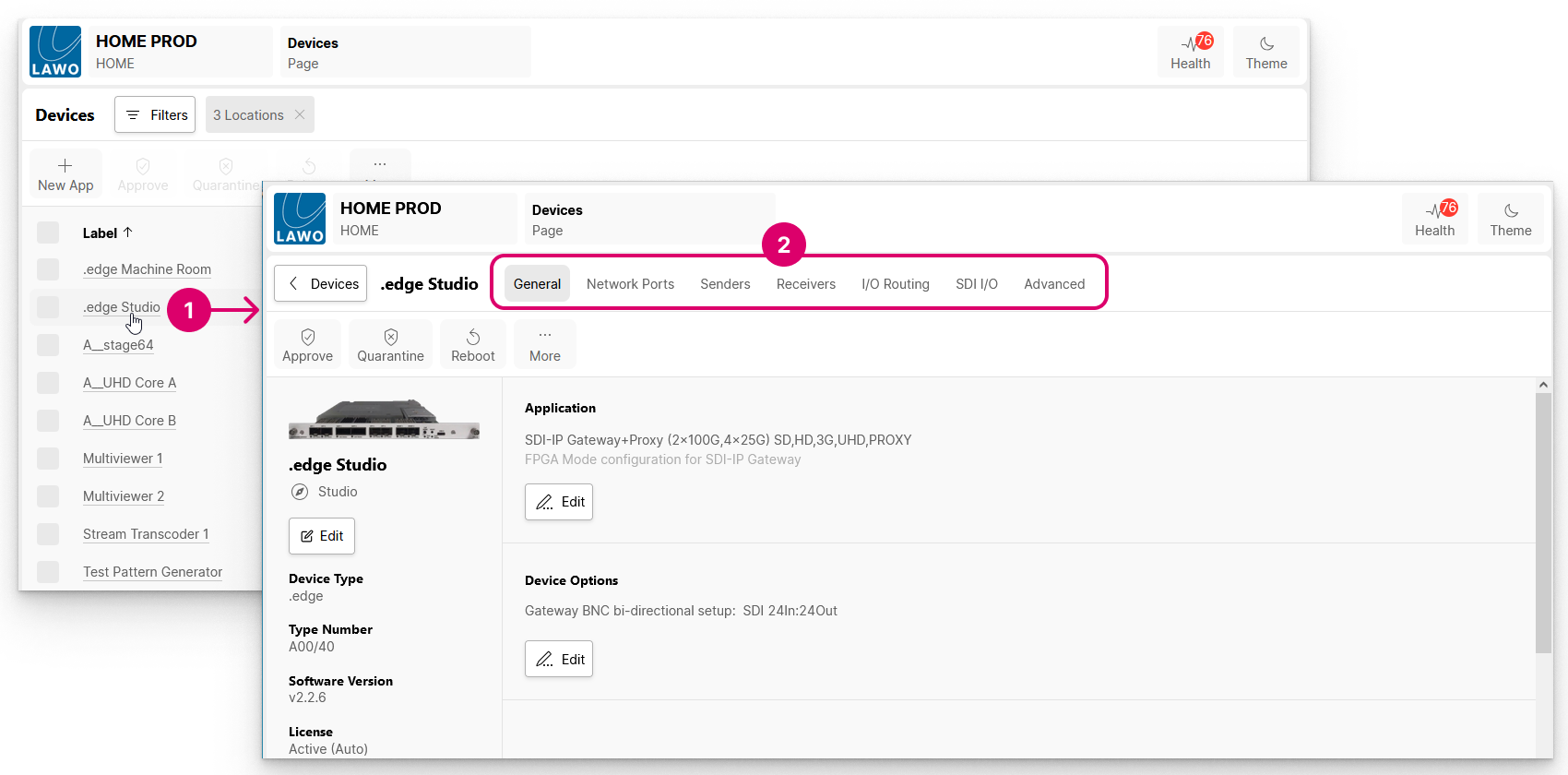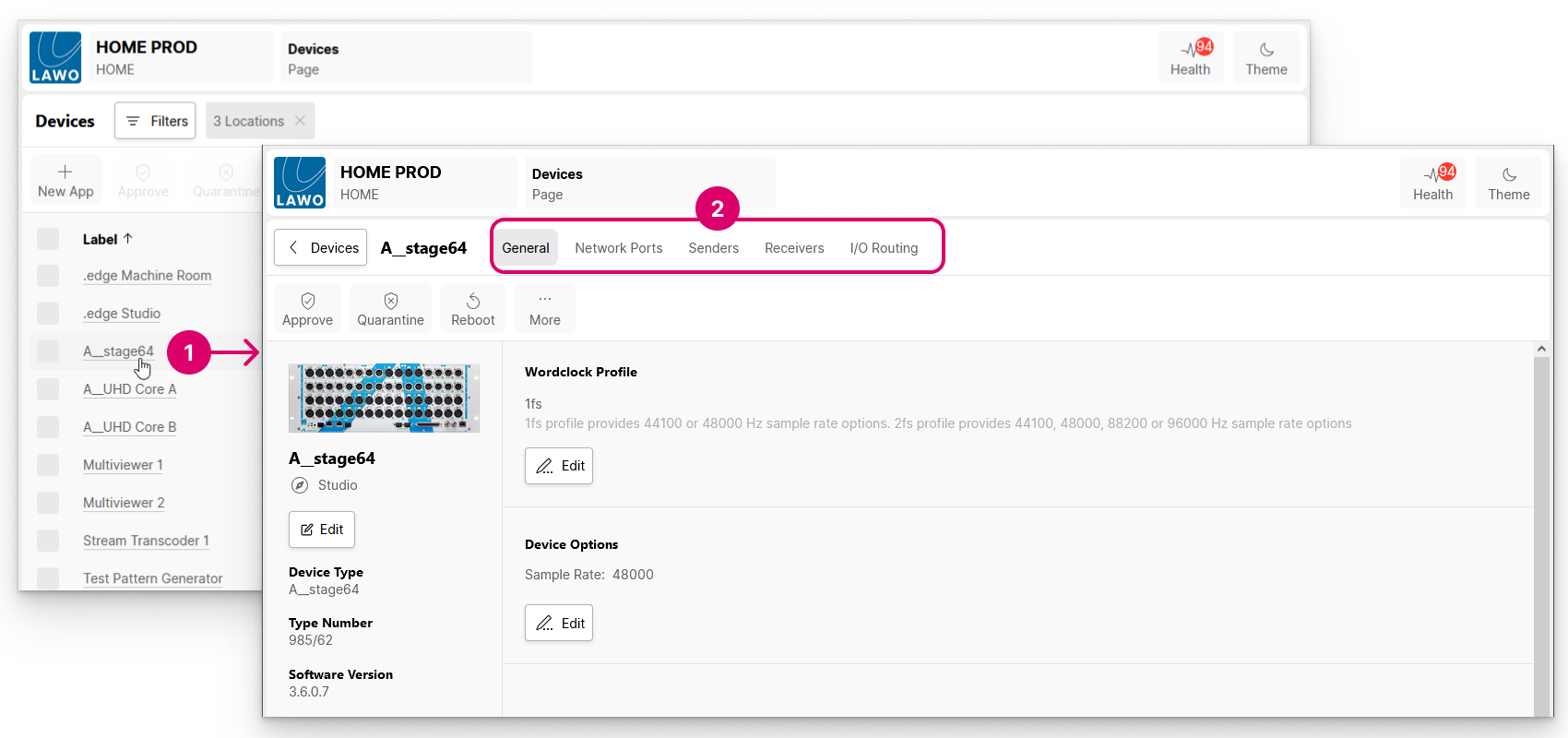HOME - Device Settings
This chapter describes how to view and edit the settings of a HOME-native device.
Operating Principles
The settings for an individual device can be viewed and edited from HOME's 'Device Details' tabs.
To access the settings:
- Click on the device label (from the main 'Devices' list). The 'Device Details' page opens with the General tab selected.
- Use the menu tabs (at the top of the page) to access settings for the Network Ports, Senders, Receivers, etc.

To return to the main 'Devices' list, click on the < Devices button (to the left of the device label):
To edit another device, repeat the steps above:

Settings Overview
The available settings vary depending on the type of device.
In the first example above, there are seven pages/tabs. The first five (General, Network Ports, Senders, Receivers and I/O Routing) are available for most streaming devices. The SDI I/O and Advanced tabs are specific to .edge.
General Settings
The General tab includes general information about the device (on the left) and other settings (on the right).
The informational fields (on the left) include the current label and location, plus the Software Version and Serial Number (important for licensing). The Edit button can be used to edit the device label and location. For a physical device, the Identify Hardware function can be used to identify the device by flashing an LED or showing a message on its front panel.
The settings (on the right) vary depending on the device type.
- For .edge, you can edit the Application (operating mode) and Device Options (number of SDI In/Out).
- For an A__stage, you can edit the Wordclock Profile (1fs or 2fs) and Device Options (sample rate).
- For HOME Apps, you can check the Lifecycle and Licensing information; change the License Type or edit the configuration of the app (under App Options).
Network Ports
The Network Ports tab lists all of the device's network ports or, for HOME Apps, the network ports of the app server. From here you can check the status of a port or edit* its network settings.
*Note that, For HOME Apps, it is not possible to edit the network settings (as this must be done during the app server configuration).
Senders and Receivers
The Senders and Receivers tabs appear for all devices that support signal streaming. They list all of the device's IP senders and receivers. For some devices, these are pre-defined (according to the configuration of the device). For others, they must be created (in HOME) using New Sender and New Receiver.
In each case, the sender(s) and receiver(s) can handle up to four essence types: Video, Audio, Metadata and/or GPIO.
If you select a sender or receiver, then it is possible to adjust the I/O Routing (for the audio streams), edit the streaming parameters or access the SDP data. In addition, the "Show Sidebar" button (on the right) reveals the available properties for the selected sender or receiver.
I/O Routing
The I/O Routing appears if a device handles audio streams. It is used to map the audio channels of the IP senders and receivers to the physical inputs and outputs of the device.
In each case, you can connect (or disconnect) the physical inputs to the IP sender channels, and the IP receiver channels to the physical outputs.
Other Tabs
If an Advanced tab is visible, then this provides access to the more advanced settings. This, and any other tabs, contain settings that are specific to the device.
Further Information
The rest of this chapter provide more information about the main pages/tabs. For device-specific settings and tabs, please refer to the documentation for your product.